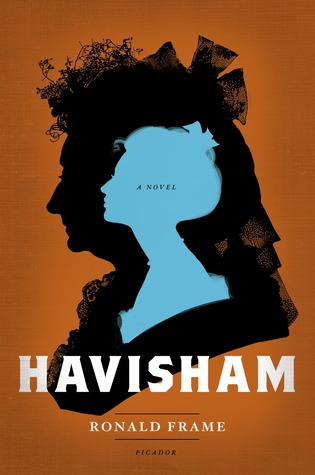Havisham: A Novel
- By Ronald Frame
- Picador
- 368 pp.
- Reviewed by Susan P. Willens
- November 15, 2013
Following the doomed Dickens’ character on her path to disaster.

Ronald Frame sets himself an impressive challenge in Havisham: Bring the haunting figure of Miss Havisham from Dickens’ Great Expectations into a novel of her own; create for her a plausible childhood and young adulthood, an alert mind and a questing heart; and force her to the catastrophic day when her marriage does not happen.
Catherine Havisham is the heiress to the fortune of the prosperous Havisham brewery. Lonely as the only child in Satis House, next door to the brewery, Catherine grows up a personage in her hometown. As a young woman, she goes to the country residence of the Chadwycks to learn the aristocratic culture she cannot know amid the noise, the odors, and the lower-class manners of her home.
Curious, lively, responsive young Catherine falls in love with Charles Compeyson. How can she know that he – so charming, so respectful, so free – will promise love and marriage, only to write in a note delivered as she is dressing on her wedding morning: “I cannot but expect that the Contents of this Letter must greatly aggrieve you. ... I cannot be your husband.”
Everything follows from this jilting, one of the most familiar in English fiction. And it warps, poisons, and ultimately destroys the innocent hopes of the girl who reads this terrible letter. She closes and darkens the house, continuing to wear the wedding dress, for, Catherine tells her maid, “if I removed it I would be denying myself the hope of a happy ending.” She orders all left as it was, so the wedding cake collapses, rodents circle the dining room and time stands still. But, of course, time moves. As Frame deftly engages the reader, Miss Havisham gives up trying to manage the brewery and finally gives up life in the present entirely – except that she adopts an orphan child, Estella. Estella’s assignment in life is to humiliate men, her haughtiness to be “her strength and her safeguard.”
Now Dickens’ readers recognize Miss Havisham’s arid home. We expect Pip, introduced by Mr. Jaggers, to arrive as a boy to play with Estella. Years pass as Pip receives funds from a secret donor, whom he assumes is Miss Havisham, and continues to be hopelessly in love with Estella. Other plot complexities – like a long-concealed half-brother, the mysterious death of Charles Compeyson, and Estella’s miserable marriage to Bentley Drummle – carry Miss Havisham to the end of her life and the failure of her misguided hope for revenge against men. As the author imagines his characters’ lives, those found in Great Expectations and those in his own rich contrivance, the reader is drawn into a compelling tale of consequences, of fate. Once betrayed, Miss Havisham loses all autonomy. She becomes a tool for revenge. Her passion for revenge takes two generations to dissipate. It ruins her life and that of her daughter.
Frame shows great tact as he negotiates the possible pitfalls that lurk around this prequel. The novel’s style is modern in vocabulary and contemporary in psychological insight. It has sympathy for its protagonist and the other major characters, while it permits the reader to feel old-fashioned fury at the evildoers.
Along the way, the novel pulses with life, with vibrant details of speech, commerce, clothing and manners. It raises the reader’s hopes for Catherine Havisham and dashes them against the force of betrayal and disappointment.
Havisham lives up to Frame’s challenge – revisit a great novel of 150 years ago and make a compelling story for our own time.
Susan Willens, a longtime member of the George Washington University English department, teaches at the American University Life-long Learning Institute and the Politics and Prose bookstore in Washington, DC.

